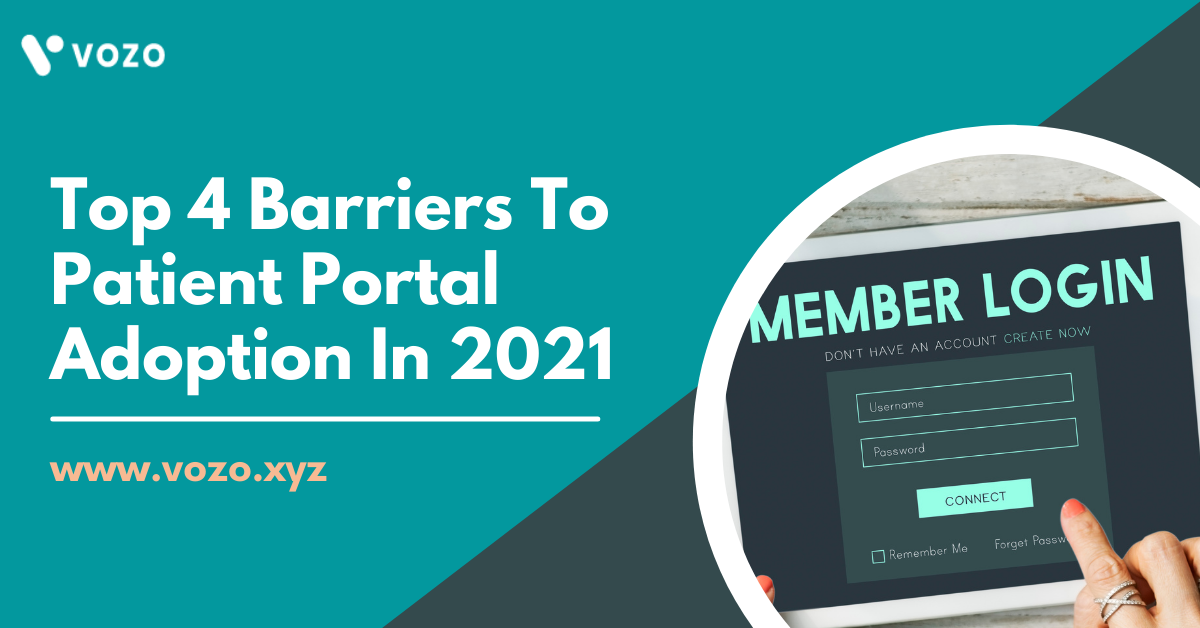Top 4 Barriers To Patient Portal Adoption In 2021
As a fundamental patient engagement technology with numerous reimbursement payments tied to its adoption, providers have long searched for the secret sauce to facilitate high patient portal use.
Medical professionals not only aim to meet meaningful use and MACRA requirements, but also want to foster better patient activation in care through the use of a patient-facing medical record.
Patient portal benefits are numerous – they provide patients access to their health data, allow patients to securely message their providers, and in many cases allow patients to complete administrative tasks such as scheduling appointments and paying bills. Providers have recognized those benefits and nearly universally offer access to the technology.
However, patient portal uptake is still limited, despite provider enthusiasm and the tool’s potential benefits. Providers must understand the barriers that keep their patients from adopting and using patient portals. After they identify those barriers, providers can create strategies to address them and facilitate better patient uptake of the tool. Ideally, this will lead to better patient activation in care and create better patient engagement.
Patients see limited use for patient portal
Notably, very few patients actually think they need the patient portal. Patients who are mostly healthy and who are not managing a chronic illness may not think they need regular access to their medical records and therefore write off the patient portal.
For an individual with chronic disease who sees a physician often or touches a medical care facility often, the portal seems to have pretty obvious utility.
In these cases, experts say providers should emphasize the tools that are useful over the patient portal. While a younger patient may not need to become familiar with lab results, they could benefit from digital appointment scheduling tools .
Providers need to look at the various features that could bring their specific populations to the portal. Online appointment scheduling made it easier and more convenient for patients to access care.
For other organizations, it meant offering the tool over a mobile interface. Patients have access to smartphones at an increasing rate, and these tools allow patients to take their health records on the go.
READ MORE: Patient Portal Software In The Era Of COVID-19: How To Get Started?
The interface is not usable
Patients are also unlikely to use a product that is not simple and easy to use. Organizations with better health data interoperability and mobile-optimized tools will see more patients engaging with the usable technology.
Healthcare organizations should ensure the patient portal also displays data that is useful to the patient in a way that is useful to the patient. Burying lab results or not offering access to clinician notes will likely keep patients from seeing the utility of the portal. Even if providers offer this health data, making it difficult for patients to navigate to it will reduce the utility in the technology.
Patients have low health literacy
Patient health literacy is an integral key to improving patient portal adoption. Just as patients want to see the features they value in way that is navigable, they also want to understand that information. If a patient has low health literacy, they are unlikely to find patient portal data useful.
Some health IT developers have begun to leverage natural language processing (NLP) to make patient portal information more accessible for patients with lower health literacy. On average, most patients have poor health literacy. NLP helps to translate certain clinical terms in the patient portal to make them more understandable for patients.
Providers must also do their jobs to improve patient health literacy. This means using patient health literacy tests and offering patient education where applicable.
Providers do not promote patient portals
Research suggests that patients are more likely to adopt the patient portal if they hear provider testimony of for the tool. Providers to truly believe in the patient portal and integrate it as the bedrock of the patient-provider interactions tend to see higher adoption rates.
Some providers have begun to tell patients that the portal is the primary way in which they will communicate – if the patient does not adopt the tool, they may fall by the wayside. Critics of that approach state that providers could lose those patients forever should they not communicate in a way that is convenient for the patient.
Providers can also promote patient adoption by enrolling patients in the clinic, explaining the key functions that can benefit patients in their healthcare management, and explaining how the tool will improve their patient-provider relationships.
Summary
Looking for an EHR Solution for your healthcare practice? Look no further than Vozo EHR. Our cloud-based EHR solution benefits both providers and patients.
Vozo EHR helps providers streamline and automate administrative tasks and encourages them to focus more on better patient care. With a vast range of features and benefits of Vozo EHR:
- Our telehealth platform enables Patients to care remotely without the need for in-person visits and reduces the cost of practice and patients.
- With appointment scheduling, patients can easily schedule appointments with healthcare providers easily reduces the wait time.
- Connect with healthcare providers conveniently via video call, chat, online messaging, etc without the need to consult providers in person.
- A cost-effective subscription plan benefits healthcare providers of all sizes.
- Vozo EHR can be the backbone of all your healthcare practice needs and requirements.
Vozo EHR helps you to navigate all the potential challenges and provides exceptional service and technical support to make sure you have no burden.
Reach out to Vozo and Empower the Best EHR solution for your healthcare practice.
About the author

With more than 4 years of experience in the dynamic healthcare technology landscape, Sid specializes in crafting compelling content on topics including EHR/EMR, patient portals, healthcare automation, remote patient monitoring, and health information exchange. His expertise lies in translating cutting-edge innovations and intricate topics into engaging narratives that resonate with diverse audiences.













